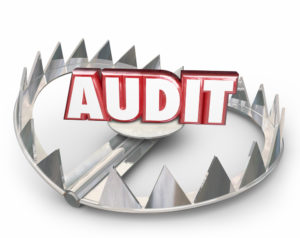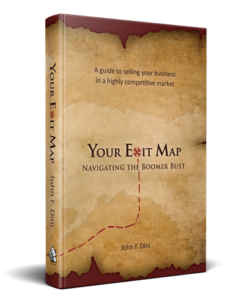In my last post we discussed quality of earnings audits from a revenue perspective. Customer concentration, marginal lines of business and contracts are the three most common revenue traps. If you are comfortable with your company’s strength and stability as regards to revenue, it’s time to look at your expenses.
There are two expense categories that trip up owners in due diligence, one-time (out of the ordinary) expenses, and unrecognized liabilities.
One Time Expenses
A few years ago I worked with a client who owned a wholesale distribution business. He presented his financial statements to me to determine the practicality of obtaining third-party financing for an employee buyout. His recast statements showed over 10% free cash flow after owner compensation. That’s a respectable number in most wholesale distribution business.
As I examined the prior year’s financial records, I noticed that the adding back of a one-time expense accounted for almost 75% of the cash flow. I inquired, and found that the expense was for a conversion of the company’s enterprise information system, including consultants’ and employee costs for implementation.
Digging further, I found that 50% of the prior year’s adjusted cash flow number resulted from reversing a one-time expense associated with converting the delivery fleet from owned to leased vehicles. The year before that, half of the cash flow came from a one-time manufacturer’s buyout of some inventory, which was replaced under generous payment terms.
There are legitimate reasons to account for one-time expenses, and doing so can give a better picture of a company’s ability to make money. When there are such add-backs year after year, however, it begins to look like an attempt to count normal operating costs as profit. The bank determined that the company did not produce sufficiently dependable cash flow to finance the LBO debt.
This is a case where a lender was considering profitability, but the same rules apply to buyers. It’s hard to sell someone on applying a multiple to profits that have never actually been produced.
Unrecognized Liabilities
The other expense category that will impact the quality of earnings opinion is unfunded liabilities. These most frequently are unearthed in employee benefits and service agreements.
 The first is accrued vacation or PTO. It is customary to keep records of this liability off the balance sheet, but professional buyers don’t see it that way. The benefit was earned while producing for the seller. They buyer has no reason to pay it out for work that wasn’t done for him.
The first is accrued vacation or PTO. It is customary to keep records of this liability off the balance sheet, but professional buyers don’t see it that way. The benefit was earned while producing for the seller. They buyer has no reason to pay it out for work that wasn’t done for him.
Pension benefits are another area replete with land mines. Don’t try to show earnings that would otherwise have been shared through an employee profit-sharing plan. A buyer will insist (rightly) than future profits should maintain traditional benefit levels.
Sloppy plan administration is also a liability. If your 401K, for instance, has a backlog of orphan accounts or other potential compliance issues, expect fixing them to be considered as acquisition costs in negotiations.
Do you have annual service agreements with your customers? The appropriate accounting method is to amortize the income over the life of the agreement. Many smaller businesses, who keep records on a cash basis, recognize the income as it is received. That may lead to adjustments in earnings.
Expect that quality of earnings auditors to also look at the service flow through the agreement. If you expend a lot of effort at the end or the contract (say to update software of position for a contract renewal) they may want to accelerate recognition of those expenses.
Not Done Yet
Remember, a quality of earnings examination has one purpose; to find areas where a purchase price merits deductions. The firms hired for these reviews command five and six figure fees for the work. They are expected to produce savings in proportion to their fees.
When you’ve run the quality of earnings gauntlet of your revenue and expenses, you’re not done yet. We have one more challenge; cash flow adjustments. More on those in the next post.
 Your Exit Map, Navigating the Boomer Bust is now available on Amazon, Barnes & Noble and wherever books are sold.
Your Exit Map, Navigating the Boomer Bust is now available on Amazon, Barnes & Noble and wherever books are sold.
With over 300 illustrations including pictures, graphs, charts and cartoons, it is a completely different approach to exit planning books.
Your Exit Map is ranked the #1 new release in its category on Amazon, and is supplemented by free tools and educational materials at www.YourExitMap.com.
 A very few claim that they know exactly what President Trump and the Republican Congress will do. In the words of Prussian General Helmut von Moltke, “No battle plan survives contact with the enemy.” People may think they know what is coming, but it would be foolish to bet the ranch on any single outcome.
A very few claim that they know exactly what President Trump and the Republican Congress will do. In the words of Prussian General Helmut von Moltke, “No battle plan survives contact with the enemy.” People may think they know what is coming, but it would be foolish to bet the ranch on any single outcome.
 The USA publishes it’s GDP growth statistics one month after the end of a quarter, with adjustments over the next few months. China puts out the number on the last day of each quarter, and never updates it. As Goolsbee says, that causes economists to wonder, “Why do they wait so long?”
The USA publishes it’s GDP growth statistics one month after the end of a quarter, with adjustments over the next few months. China puts out the number on the last day of each quarter, and never updates it. As Goolsbee says, that causes economists to wonder, “Why do they wait so long?”